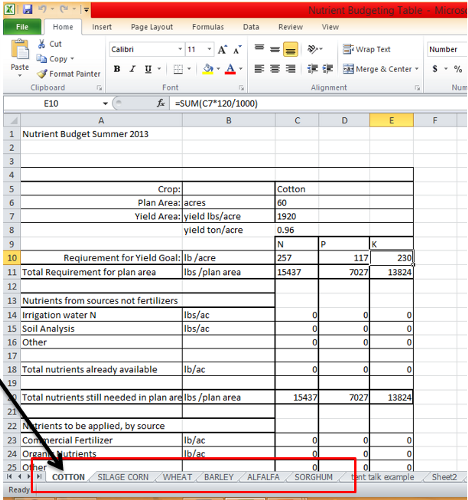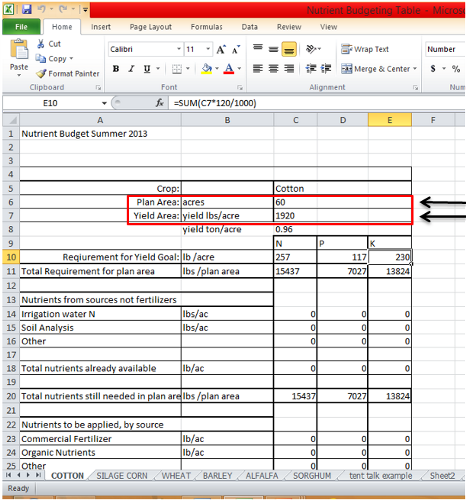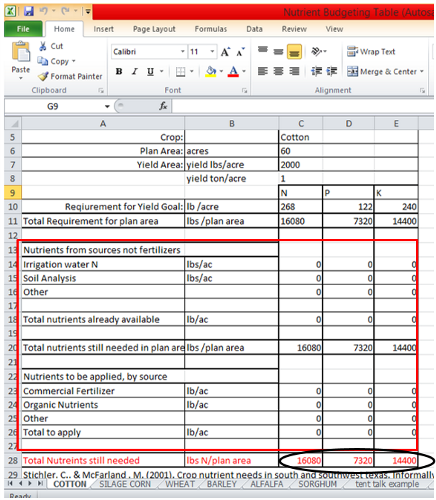The Nutrient Budget Tool is a resource for growers who are interested in adequately providing the correct amount of nutrients for their crops for the optimal yields. This tool allows growers to choose crop type and yield goals into a spreadsheet that will then output the needed fertilizer levels of N, P, K needed to meet projected yield goals. Soil test, irrigation water test, and manure nutrient test analysis results can also be input to calculate the overall results of a crop’s nutrient/fertilizer needs. This tool is designed to help promote soil testing and analysis and to help growers be more cost and nutrient efficient. We plan to expand the Nutrient Budget Tool in the future to incorporate soil salinity levels (EC) and pH to better service the nutrient budget users and provide greater information.
Download:
1. Choose the crop from the list of tabs at the bottom of the screen.

2. Fill in the “Plan Area” field in acres and “Yield Area” field in lbs/acre or tons/acre. Doing this will provide the needed N, P, and K requirements of the specified plan area.

3. Additional numbers from irrigation water analysis, soil analysis and fertilizer analysis from a plan area can be input to factor in to the overall needed requirements for N, P, and K in lbs/plan area.
